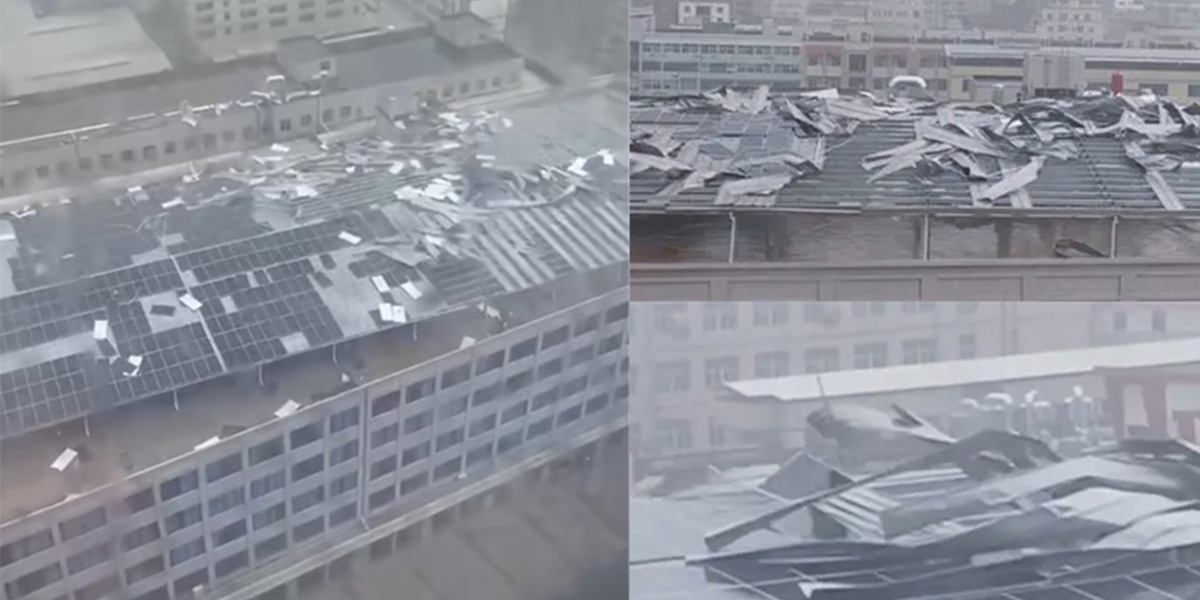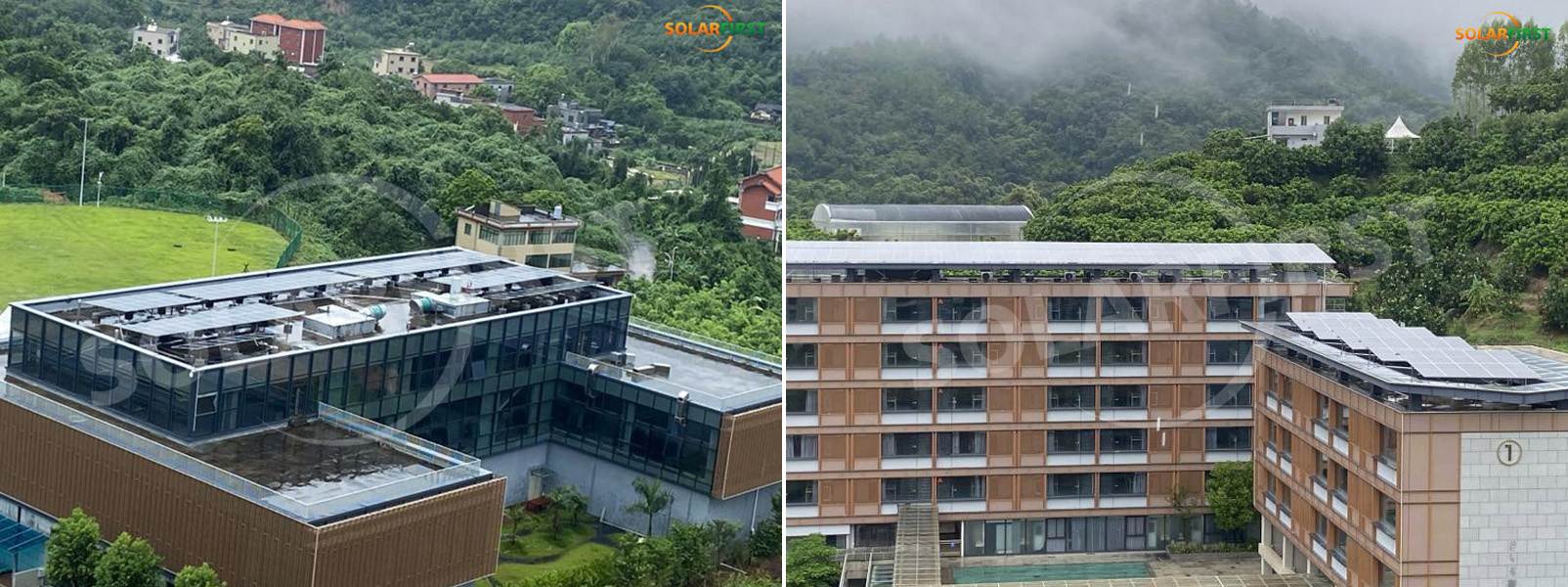On July 28, Typhoon Doksuri made landfall along the coast of Jinjiang, Fujian Province, bringing gales and torrential rain. It stands as the strongest typhoon to hit China this year and the second-strongest to strike Fujian since comprehensive meteorological records began. Post-landfall assessments revealed damage to some local power stations in Quanzhou. However, the rooftop PV plant constructed by Solar First in Tong’an District, Xiamen City, remained fully operational and withstood the typhoon’s impact.
Some damaged power stations in Quanzhou

Solar First’s rooftop PV plant in Tong’an District, Xiamen

At landfall, maximum winds near Doksuri’s eye reached Category 15 (50 m/s, severe typhoon level), with a minimum central pressure of 945 hPa. According to Xiamen Meteorological Bureau, the city’s average rainfall between 5:00–7:00 am on July 27 reached 177.9 mm, with Tong’an District averaging 184.9 mm.
Tingxi Town in Xiamen’s Tong’an District—located approximately 60 km from Doksuri’s landfall center—fell within the typhoon’s Category 12 wind circle and endured severe storm conditions.
For the Tong’an project, Solar First implemented a steel bracket solution that comprehensively accounted for variables including roof profiles, orientations, building heights, load-bearing capacities, surrounding environments, and extreme weather risks. The design strictly adhered to national structural and load standards, optimizing both power generation efficiency and structural resilience. On sections of the roof, brackets were elevated according to existing landscape structures.
Following Typhoon Doksuri’s passage, Solar First’s self-built rooftop PV plant in Tong’an District sustained no damage, demonstrating the robustness of its typhoon-resistant design. This outcome validates the reliability of Solar First’s PV solutions and its capacity for standards-exceeding engineering, while providing valuable operational experience for maintaining PV plants during extreme weather events.
leave a message
Scan to wechat :
